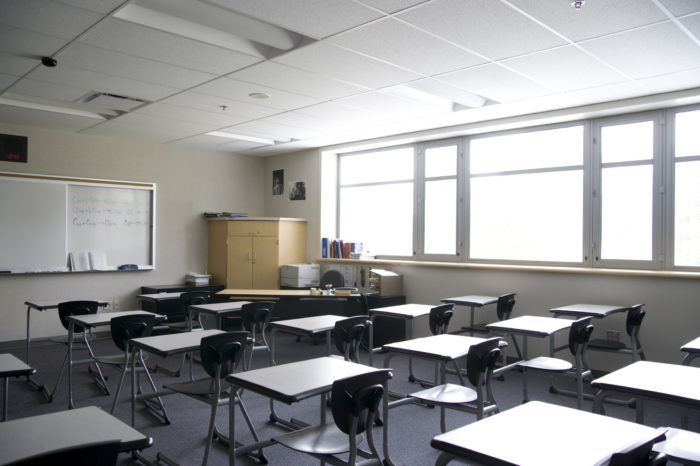Closing Catholic Schools in Massachusetts Can Be Avoided
The Archdiocese of Boston recently announced that after operating for 93 years, the Saint Clement School in Medford will be closing its doors at the end of this school year due to a persistent decline in enrollment. That means a multitude of students who believed they would be following the thousands before them as Saint Clement’s graduates will instead be tearfully giving up the maroon for colors unknown.
Saint Clement High School is part of the Central Catholic League and I’ve enjoyed watching the players compete against my son’s school, Marian High School, in Framingham. The school’s closing hits close to home.
Saint Clement’s closing does not represent an isolated example. Enrollment in Boston Archdiocese schools has dropped 21 percent in a decade, from 51,046 in 2004 to 40151 in 2014. During the same period, the diocese closed 58 schools. By 2016, enrollment was down to about 38,000. According to a Boston Globe story, even the hallowed Boston College High School, isn’t exempt from the trend. The all-boy school saw the number of applications for the next school year drop 40 percent from the previous year and the number of last fall’s new students were 17 percent lower from the prior fall. The concern among trustees is so significant, they are considering reversing its 154-year-old policy of being an all boy school.
The same thing is happening across the state – the Archdiocese of Springfield closed Saint Mark School in Pittsfield in 2015, leaving only three Catholic Schools in the Berkshires.
The Saint Clement School’s website boasts that 99 percent of its graduates go on to college – 90 percent to four-year schools. Saint Clement School primarily serves students from Somerville and Medford, where 71 and 75 percent of graduates, respectively, go on to higher education, according to recent Department of Elementary and Secondary Education department data. School in Boston’s Archdiocese have historically outpaced the Boston Public Schools, Massachusetts, and the nation in terms of academic performance, yet they now face a crisis in terms of enrollment.
Saint Clement’s is closing despite a population explosion in the area. Somerville was among the top five communities with the highest population gains in the state from 2015 to 2016, according to a report by the State House News Service on US census statistics. Yet demographic shifts and economic hurdles outweigh the population growth when it comes to driving school enrollment.
The primary cause in the decline are the tuition hikes impossible to avoid because of the changing status of teachers in Catholic schools.
According to “Be Not Afraid” – a History of Catholic Education in Massachusetts, Catholic School closings are nothing new. In the 1960’s, under Cardinal Richard Cushing, there was considerable growth in the number of high schools in the archdiocese. But the 1960’s and 1970’s also brought a decline in the number of men and women becoming priests and nuns. As more and more lay people took on teaching roles in Catholic schools, the tuitions in the hundreds of dollars rather than in the thousands of dollars began to evaporate. Even with partial financial aid from the school, tuition became out of reach for many families. Additionally, many urban families moved to suburbs with higher-performing public schools with no tuition at all.
But while closings are nothing new, the decline in enrollment and the overall environment suggests that consolidation of schools will continue and that over the next decade, without additional supports, Catholic schools will continue to close. That means fewer children will have school choice options available to give them a quality education and that district schools will not have to work so hard to compete.
It is now or never for Massachusetts policymakers to take action if the state’s Catholic schools are to survive and serve as robust options for urban youth. Why not provide educational tax credits to low-income families who pay tuition for private schools?
Apart from any moral reasons for doing so, there is a financial reason for taking action. To put the crisis into financial perspective, according to a 2009 Parents Alliance for Catholic Education study, if all the state’s Catholic schools were to close, taxpayers would be on the hook for an additional half a billion dollars annually to educate students currently enrolled in Catholic schools.
But the higher reason for policy makers to act is a moral one. Our society has long been committed to providing pathways for low-income and minority children to rise economically. The success rate of Catholic schools in educating these children and giving them both the academic credentials and internal drive to enter college is beyond reproach. Providing education tax credits so more children could attend Catholic schools would be a meaningful way to preserve and strengthen this long-standing tradition.



